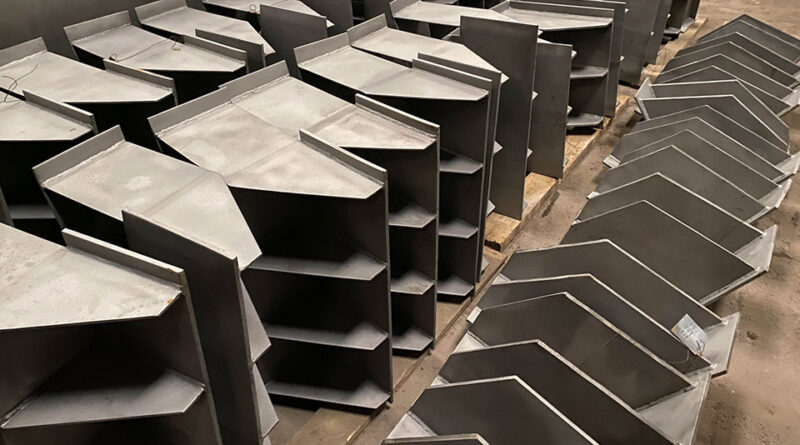What are Sheet Metal Fabrication Services?
Sheet metal fabrication services encompass a comprehensive suite of processes designed to transform sheets of metal into parts, assemblies, or complete structures. This crucial field serves pivotal roles across various industries, including automotive, aerospace, electronics, and construction, offering tailored solutions to meet diverse manufacturing demands.
Introduction to Sheet Metal Fabrication
Sheet metal fabrication involves manipulating metal sheets—ranging from aluminum to stainless steel—into desired shapes and sizes. This multi-step process involves several techniques including cutting, bending, and assembling, crucial for creating the final product.
Core Processes in Sheet Metal Fabrication Services
Cutting Techniques
The process begins with cutting, where metal sheets are sectioned into shapes necessary for further processing. Methods such as laser cutting, which uses a concentrated laser beam, and waterjet cutting, which utilizes a high-pressure water stream mixed with abrasives, are chosen for their precision and efficiency. Plasma cutting is also prevalent, particularly suitable for thicker materials.
Bending and Shaping
Following cutting, the metal sheets are bent into required shapes using methods like press brake bending, where metal is pressed against a die, and roll bending, which uses rollers to form curved shapes.
Joining Methods
Assembling the metal parts into a cohesive unit is accomplished through techniques like welding, riveting, and adhesive bonding. Each method has its own advantages depending on the requirements of the project.
Advanced Techniques in Sheet Metal Fabrication
Innovative techniques such as precision laser engraving and automated bending machines enhance the capabilities and efficiency of sheet metal fabrication, promoting precision and reducing production times.
Applications of Sheet Metal Fabrication Services
Sheet metal is essential in creating a wide array of products across various sectors. It is employed extensively in the automotive industry for parts like body panels and engines, in aerospace for constructing aircraft structures, and in electronics for fabricating sturdy enclosures.
Benefits of Utilizing Sheet Metal Fabrication Services
Sheet metal fabrication offers versatility, scalability, and durability, making it a preferred choice for various industrial applications.
Selecting a Sheet Metal Fabrication Service
Choosing the right service provider involves considering their capability to handle specific metals, adherence to quality standards, industry experience, and technological advancements.
Sustainability in Sheet Metal Fabrication
Environmental considerations are increasingly prioritized, with many fabricators adopting waste minimization practices and recycling to manage scrap metal more effectively.
Challenges Facing Sheet Metal Fabrication
Despite its numerous benefits, sheet metal fabrication faces challenges like material waste, design limitations, and the need for skilled labor to operate advanced machinery.
Quality Control in Sheet Metal Fabrication
Maintaining high quality is paramount in sheet metal fabrication. Rigorous quality control measures include dimensional inspections, material testing, and adherence to international standards, ensuring that each part meets stringent criteria before it is deemed ready for use.
Customization in Sheet Metal Fabrication
One of the significant advantages of sheet metal fabrication is its capacity for customization. Fabricators can tailor products to meet specific design requirements, making it possible to produce everything from bespoke furniture to specialized industrial machinery components.
Cost Considerations in Sheet Metal Fabrication
Understanding the cost factors in sheet metal fabrication is essential for budget planning. These include material costs, labor, the complexity of the parts, and the quantity produced. Economies of scale can be achieved with larger production volumes, making the process more cost-effective.
The Impact of Technology on Sheet Metal Fabrication
Technological advancements have revolutionized sheet metal fabrication. The integration of CAD/CAM software, automation, and advanced machining tools has increased the precision, speed, and efficiencies, enabling more complex designs and faster turnaround times.
Future Trends in Sheet Metal Fabrication
The future of sheet metal fabrication looks to further integration of automation and data analytics to optimize production processes. As technologies evolve, the capability to produce more intricate and durable parts at lower costs is expected to grow, pushing the boundaries of what can be achieved in manufacturing.
Conclusion
Sheet metal fabrication services are indispensable to the manufacturing industry, providing necessary components and structures for a wide range of applications. A comprehensive understanding of the processes, benefits, and challenges associated with sheet metal fabrication helps companies effectively utilize these services to enhance product quality and operational efficiency. Whether for automotive, aerospace, or construction, sheet metal fabrication continues to be a cornerstone of industrial success.
Article credits: Techybusinesses

